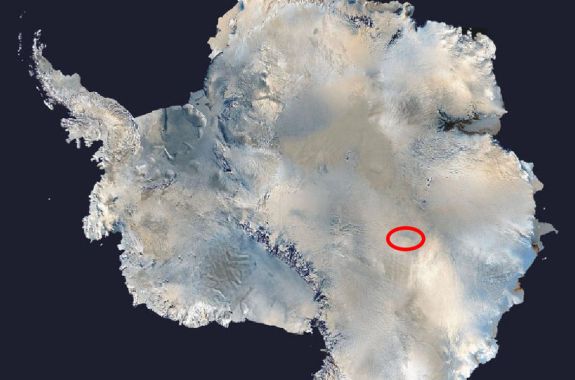On Today's Podcast
What’s Happening On The Slippery Surface Of Ice?
Conventional wisdom is that ice is slippery because it has a thin layer of water on top, but new research suggests something else is at play.
Listen NowJanuary 16, 2026
Some Parkinson’s patients may experience strange symptoms, like smell loss and sleep disorders, decades before diagnosis. Plus, a Pompeii construction site preserved in ash reveals secrets of the famously durable Roman concrete. And, Greenland sharks live for hundreds of years, but their eyes never seem to get old. What can they teach us about aging human eyes?
Building Better Broccoli, a Nose Spray for Alzheimer’s?, Bedtime Blunders, and More
A roundup of science stories or studies that blow our mind, tickle our funny bone, or generally strike our fancy.
Operation Strawberry: One Artist’s Mission to Revive a Heritage Fruit
Through social networking and word of mouth, artist Leah Gauthier is helping preserve the Marshall strawberry, a fragile, juicy, heirloom plant. Just call her Jane Strawberryseed.
Rich Diversity of Life May Be Locked In Antarctic Lake
A new study suggests that a bevy of bacteria and other life could be dwelling in Lake Vostok.
Playing the Ol’ Armonica
Benjamin Franklin invented an instrument that takes musical glasses to a whole new level.
29:05
Is Alternative Medicine Really ‘Medicine’?
In his new book, Paul Offit writes that many alternative treatments are unproven, or worse, harmful.
9:59
Building a Liver From Stem Cells
Researchers say they have created a functional human liver using induced pluripotent stem cells.
7:47
Writing Tunes to Tune In To
A behind-the-notes look at the creation of Science Friday’s new theme music.
7:51
Can White Blood Cells Spread Cancer?
Researchers say they may have found a new way that cancer spreads.
14:16
With Rising Temperatures, Infrastructure Falters
Hot weather means more than just sweaty brows and a yearning for the pool.
23:29
Benjamin Franklin’s Intellectual Revolution
Benjamin Franklin pushed innovations that set the groundwork for the political and intellectual revolution in America.
Lock Luster
The evolution of safe and vault lock technology is on view in midtown Manhattan.
Rube Goldberg Mashup
July 4th isn’t just Independence Day—it’s the anniversary of Rube Goldberg’s birthday.
Benjamin Franklin: America’s First Social Networker?
Benjamin Franklin was instrumental in founding the American Philosophical Society, which drove his goal toward improving collective, “useful knowledge.”
A Most Important Radio Station, Birds and Tornadoes, More
A roundup of science stories or studies that blow our mind, tickle our funny bone, or generally strike our fancy.
12:20
Obama: U.S. Should Lead Assault on Climate Change
Without cooperation from Congress, President Obama has proposed his own plan for climate change.
28:50
Aiming For ‘Wild and Crazy’ Energy Ideas
The Advanced Research Projects Agency-Energy backs risky ideas that may offer a huge energy payoff.
5:43
Living Large in 140 Square Feet
Chris Tack made seven unloading trips to Goodwill before moving into the tiny home he and his wife Malissa designed and built.
29:35
‘Brainwashed’ Examines the Value of Brain Scans
What, if anything, can brain scans reveal about the mind at work?
17:17
Not One, but Three ‘Goldilocks Planets’?
In a nearby solar system, astronomers say they found three planets that could support life.

